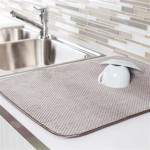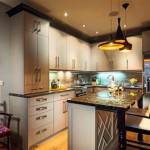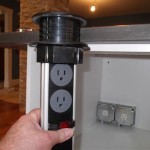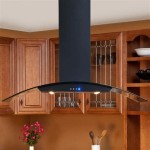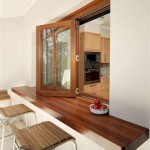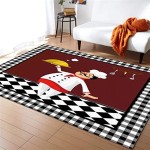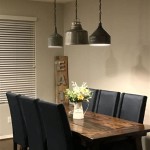Weatherproof Outdoor Kitchen Cabinets: A Comprehensive Guide
Outdoor kitchens have evolved from simple grills to sophisticated extensions of the home, offering a comfortable and functional space for cooking, dining, and entertaining. A critical component of any outdoor kitchen is the cabinetry, providing storage, counter space, and a defined aesthetic. However, outdoor environments present unique challenges, making the selection of weatherproof outdoor kitchen cabinets a crucial decision. These cabinets must withstand the elements, resist moisture, and maintain their structural integrity and appearance for years to come.
This comprehensive guide explores the considerations involved in choosing weatherproof outdoor kitchen cabinets, outlining the materials available, factors influencing durability, and design considerations for creating a functional and aesthetically pleasing outdoor cooking space.
Understanding the Challenges of Outdoor Environments
Outdoor environments pose significant threats to kitchen cabinets. These include moisture, temperature fluctuations, ultraviolet (UV) radiation, and insect infestations. Rain, snow, and humidity can lead to warping, rotting, and delamination in cabinets constructed from unsuitable materials. Temperature changes can cause expansion and contraction, potentially damaging joints and finishes. UV radiation can fade or discolor surfaces, while insects can burrow into wood and compromise its structural integrity. Therefore, selecting materials and construction methods that resist these challenges is paramount.
The specific climate of the location directly influences the level of protection required. Coastal regions, for example, experience high humidity and saltwater spray, demanding highly resistant materials like marine-grade stainless steel or high-density polyethylene (HDPE). Areas with harsh winters require cabinets that can withstand freezing temperatures and thawing cycles. In contrast, regions with intense sun exposure necessitate UV-resistant finishes and materials.
The placement of the outdoor kitchen also plays a role. An outdoor kitchen located under a covered patio will be less exposed to direct rainfall and sunlight compared to one situated in an open area. This consideration will influence the required level of weatherproofing for the cabinets.
Key Materials for Weatherproof Outdoor Kitchen Cabinets
Several materials offer varying degrees of weather resistance and are commonly used in the construction of outdoor kitchen cabinets. Understanding the properties of each material is essential for making an informed decision.
Stainless Steel: Stainless steel is a popular choice for outdoor kitchen cabinets due to its exceptional durability and resistance to corrosion. Marine-grade stainless steel (304 or 316) is particularly well-suited for coastal environments as it contains a higher concentration of molybdenum, which provides increased resistance to saltwater corrosion. Stainless steel cabinets are easy to clean and maintain, offering a sleek and modern aesthetic. However, they can be more expensive than other options and may become hot to the touch in direct sunlight.
High-Density Polyethylene (HDPE): HDPE is a plastic polymer that is exceptionally resistant to moisture, UV radiation, and insect damage. It is available in a variety of colors and textures, allowing for customization of the cabinet's appearance. HDPE is relatively lightweight and easy to work with, making it a cost-effective option. It is also resistant to staining and requires minimal maintenance. However, HDPE may not offer the same level of aesthetic appeal as natural wood or stainless steel.
Concrete: Concrete is a highly durable and weather-resistant material that provides a unique and contemporary aesthetic. Concrete cabinets can be custom-formed to create unique shapes and sizes. They are resistant to fire, insects, and rot, making them a long-lasting option. However, concrete cabinets are heavy and require professional installation. They can also be susceptible to cracking if not properly sealed and maintained.
Cement Board: Cement board provides a solid substrate for attaching other finishes. It is naturally mold and mildew resistant, and withstands extreme weather conditions. It is often used as the base for tiled outdoor kitchens. Compared to concrete, it is slightly lighter and easier to work with.
Teak and Other Hardwoods: Certain hardwoods, such as teak, ipe, and mahogany, possess natural oils that make them resistant to moisture and decay. These woods offer a warm and inviting aesthetic that can complement a variety of outdoor spaces. However, hardwood cabinets require regular maintenance, including oiling or sealing, to maintain their appearance and protect them from the elements. Hardwood cabinets can also be more expensive than other options.
Powder-Coated Aluminum: Aluminum, when treated with a powder coating, offers a lightweight and rust-resistant option for outdoor kitchen cabinets. Powder coating provides a durable and attractive finish that can withstand UV radiation and moisture. Aluminum cabinets are relatively easy to clean and maintain. However, they may not be as strong or dent-resistant as stainless steel.
Factors Influencing Durability and Longevity
Beyond the choice of materials, several other factors contribute to the durability and longevity of outdoor kitchen cabinets. These include construction methods, hardware selection, and surface finishes.
Construction Methods: The way the cabinets are constructed significantly impacts their ability to withstand the elements. Look for cabinets with strong joinery, such as mortise-and-tenon joints or dovetail joints, which provide superior strength and stability. Avoid cabinets that are simply stapled or glued together, as these are more prone to failure over time. Weatherproof adhesives and sealants should be used to prevent moisture from penetrating the cabinet structure.
Hardware Selection: Hinges, handles, and drawer slides should be made from corrosion-resistant materials, such as stainless steel or brass. These materials will prevent rusting and ensure smooth operation even in humid environments. Self-closing hinges and drawers are also beneficial, as they help to protect the cabinet interiors from moisture and insects.
Surface Finishes: The surface finish of the cabinets plays a crucial role in protecting the underlying material from the elements. Powder coating, marine-grade varnishes, and UV-resistant paints are all excellent options for outdoor kitchen cabinets. These finishes provide a barrier against moisture, UV radiation, and scratches. Regular maintenance, such as cleaning and reapplying the finish as needed, will help to prolong the life of the cabinets.
Ventilation: Proper ventilation within the cabinet is crucial to prevent moisture buildup and mold growth. Cabinets should be designed with ventilation holes or gaps to allow air to circulate. This is particularly important in humid environments. Ensure that the ventilation openings are screened to prevent insects from entering the cabinets.
Water Management: Implementing smart features for water management can improve the longevity of outdoor cabinets. This can range from simply sloping the tops of cabinets so water runs off to installing gutters or overhangs to direct water away from the cabinets.
Design Considerations for Functional Outdoor Kitchens
Beyond weatherproofing considerations, designing a functional and aesthetically pleasing outdoor kitchen requires careful planning. Factors such as layout, storage needs, and appliance integration should be considered.
Layout: The layout of the outdoor kitchen should be designed to maximize efficiency and flow. Consider the "work triangle" principle, which places the grill, sink, and refrigerator in close proximity to each other. This minimizes steps and allows for efficient food preparation and cleanup. The layout should also take into account traffic flow and seating arrangements.
Storage Needs: Assess your storage needs based on the types of cooking and entertaining you plan to do. Consider including a variety of storage options, such as drawers, cabinets, and shelving, to accommodate different items. Deep drawers are ideal for storing pots and pans, while cabinets can be used for storing dry goods and utensils. Shelving can be used to display decorative items or store frequently used items.
Appliance Integration: Carefully plan for the integration of appliances, such as grills, refrigerators, and sinks. Ensure that the cabinets are designed to accommodate the specific dimensions of the appliances. Provide adequate ventilation for grills and refrigerators to prevent overheating. Consider including features such as warming drawers or ice makers to enhance the functionality of the outdoor kitchen.
Countertop Selection: Countertops are a crucial element of both the aesthetics and functionality of the outdoor kitchen. Materials such as granite, quartz, and concrete are durable and weather-resistant options. Consider the color and texture of the countertop to complement the overall design of the outdoor kitchen. It is crucial to seal the countertop to prevent staining and water damage.
Aesthetic Considerations: The aesthetic of the outdoor kitchen should complement the style of the home and the surrounding landscape. Consider the color, texture, and design of the cabinets to create a cohesive and inviting space. Incorporate elements such as lighting, landscaping, and outdoor furniture to enhance the overall ambiance of the outdoor kitchen.
Access Panels: When designing the outdoor kitchen, remember to include access panels for utilities such as gas, electric, and plumbing. These panels will allow for easy maintenance and repairs without the need to disassemble the cabinets.
Professional Installation: While some homeowners may attempt to install outdoor kitchen cabinets themselves, professional installation is highly recommended. Experienced installers have the knowledge and skills to ensure that the cabinets are properly installed and sealed, minimizing the risk of water damage and other problems.

Discover The Best Outdoor Kitchen Cabinets A Storage Guide

Outdoor Kitchen Cabinets The Professional Guide Pa

Outdoor Kitchen Cabinets The Professional Guide Pa

Weatherproof Outdoor Kitchen How To Design Yours

Weatherproof Outdoor Kitchen How To Design Yours

A Guide On Building Outdoor Cabinets Material Selection

Outdoor Kitchen Cabinets The Professional Guide Pa

Diy Outdoor Kitchen Cabinets

Naturekast Outdoor Kitchen Insider Insights 3 Important Points

Professional Outdoor Kitchen Systems Call Now
Related Posts

